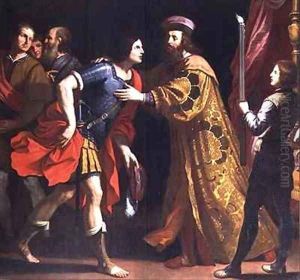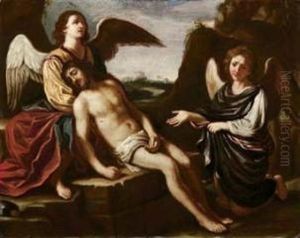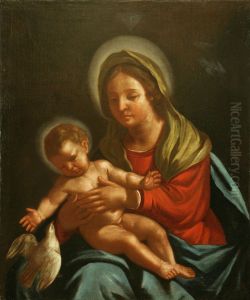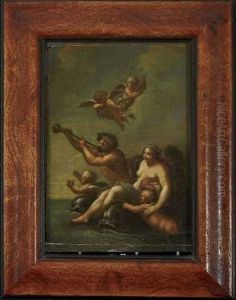Ercole Gennari Paintings
Ercole Gennari was an Italian painter and engraver, born in Cento, a small town in the Emilia-Romagna region of Italy, in 1597. He was deeply embedded in the artistic milieu of the early Baroque period, a time characterized by dramatic expression and adventurous technical experimentation in art. Gennari's life and work were profoundly influenced by the towering figure of the era, Guercino (Giovanni Francesco Barbieri), under whose guidance and influence Gennari honed his craft. Notably, Gennari was not just a student of Guercino; he was also his nephew, which provided him with an intimate connection to the innovative artistic techniques and the vibrant intellectual environment that surrounded Guercino.
Gennari's oeuvre reflects a strong adherence to the stylistic and thematic principles of his uncle's work, emphasizing dynamic compositions, a rich palette, and a keen attention to emotional expressiveness. However, despite these similarities, Gennari developed his own distinctive approach, particularly in his engravings and smaller-scale works. His artistic output includes religious subjects, which were popular during the Baroque period, as well as mythological scenes and portraits. These works demonstrate not only his technical skill but also his ability to infuse his subjects with a sense of immediacy and psychological depth.
After Guercino's death in 1666, Gennari took over the running of his uncle's workshop, along with his brother, Benedetto Gennari, who was also a painter. This period saw the continuation of Guercino's artistic legacy through the works of the Gennari family, ensuring that the stylistic and thematic innovations of the Baroque period persisted into the latter half of the 17th century. Ercole Gennari's contributions to Italian Baroque art, though perhaps not as widely recognized as those of his uncle, remain an important part of the period's artistic heritage. He died in Bologna in 1658, leaving behind a body of work that continues to be studied and admired for its craftsmanship and emotional resonance.



